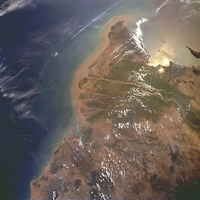Earlier this month, the leaders of Vietnam, Laos, Cambodia, and host country Thailand gathered for the first-ever Mekong River Commission (MRC) summit to discuss the future of the Mekong, one of the world's longest and most resource-rich rivers.
There was much to discuss. The Mekong -- which flows through China, Myanmar, Vietnam, Laos, Cambodia and Thailand, and provides food, water, and transport for about 65 million people -- is now at its lowest level in two decades due to a prolonged drought. Its future is also in peril due to a host of natural and man-made threats. Unless riparian states make a concerted, joint effort to manage the river's resources prudently and sustainably, their actions risk threatening food security, destroying livelihoods, and heightening regional tensions.
The main threat is from hydropower. China, which already has five operational dams, plans to construct about 15 more large- to mega-sized hydropower dams upstream, while Southeast Asian states themselves mull building 11 of their own further downstream. While these dams do not deplete the river's water supply outright, they affect the hydrology of the Mekong by altering the natural timing and volume of the river's seasonal flows. According to a recent report (.pdf) by the Stimson Center, a Washington-based think tank, resulting reductions in silt deposits downstream could threaten one of the most productive regions of wet rice cultivation, while erratic water currents may block the spawning migration of fish in what is now the world's largest freshwater fishery.

